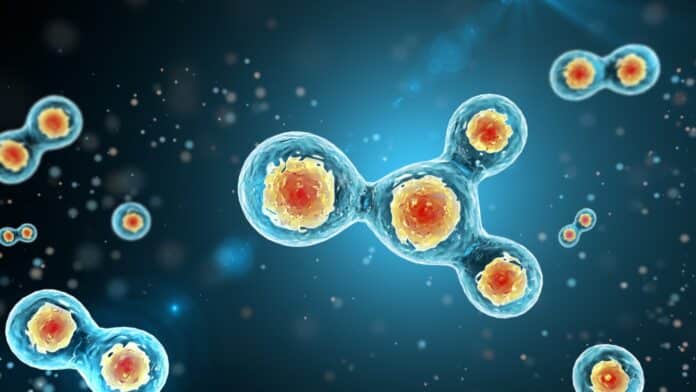A new study from NYU Grossman School of Medicine shows that a protein helping single cells move behaves differently in groups. In zebrafish embryos, 140 primordium cells use the protein RhoA to generate forces for movement. These cells, crucial for organ formation and healing, extend protrusions, grab onto nearby tissues, and pull them back in, like casting and hauling in an anchor to move forward.
The study, focusing on zebrafish, which share cellular mechanisms with humans, sheds light on how forces are generated during collective cell movement in developing embryos.
Senior study author Holger Knaut, Ph.D., associate professor in the Department of Cell Biology at NYU Langone Health, said, “This finding surprised us because we had no reason to suspect that the RhoA machinery required to move groups of cells would be different from that used by single cells.”
Unlike past findings where single cells use RhoA at their back ends to move, the current study on cell groups like the primordium reveals that cells activate RhoA in pulses at the front. This starts non-muscle myosin II, pulling on the cell’s skeleton and causing protrusions. When pulled in, these protrusions grip the surface and move the cell group forward, akin to how a banana slug moves on the ground. This insight differs from previous studies and sheds light on the mechanics of collective cell movement in groups like the primordium.
Dr. Knaut added, “Our findings suggest that RhoA-induced actin flow on the basal sides of cells constitutes the motor that pulls the primordium forward, a scenario that likely underlies the movement of many cell groups, The machinery suggests that the movement of single cells and groups of cells is similar, but that RhoA contributes to that machinery differently in each case. RhoA generates actin flow toward the rear to propel the group forward within moving cell groups.”
Understanding how cell groups move can be crucial in stopping cancer spread. Dr. Knaut suggests this insight may guide the design of treatments targeting proteins identified in the study.
Journal reference:
- Weiyi Qian, Naoya Yamaguchi, et al., Pulses of RhoA signaling stimulate actin polymerization and flow in protrusions to drive collective cell migration. Current Biology. DOI: 10.1016/j.cub.2023.11.044.
